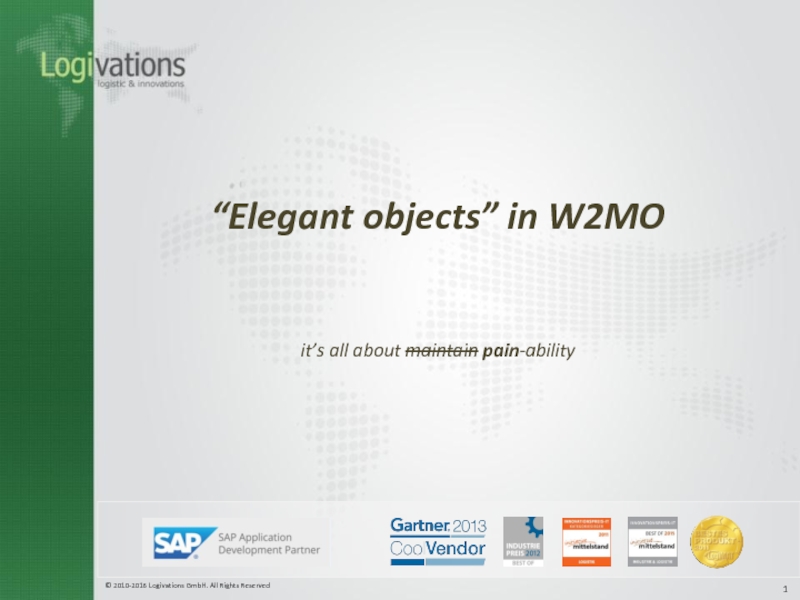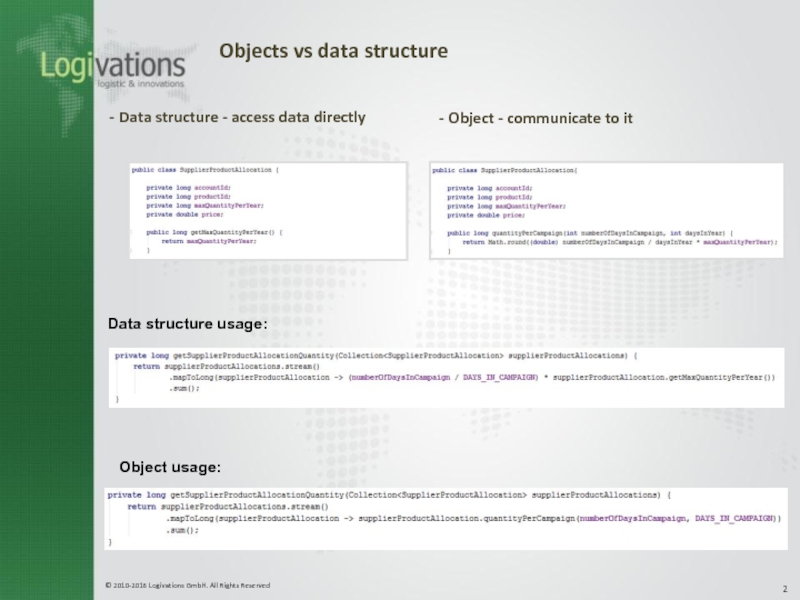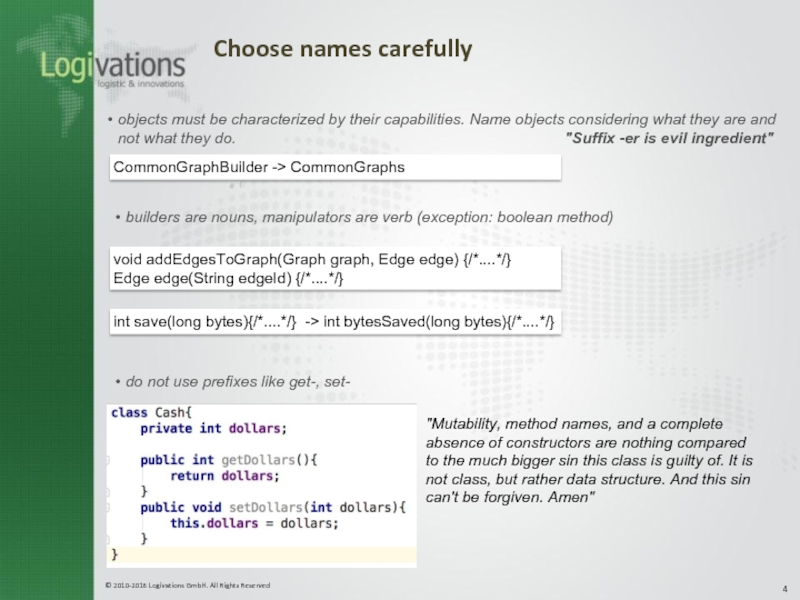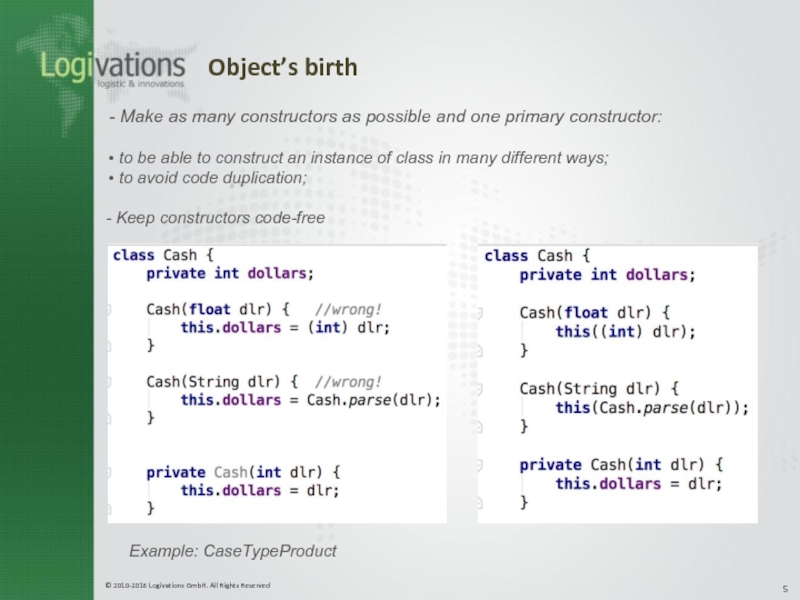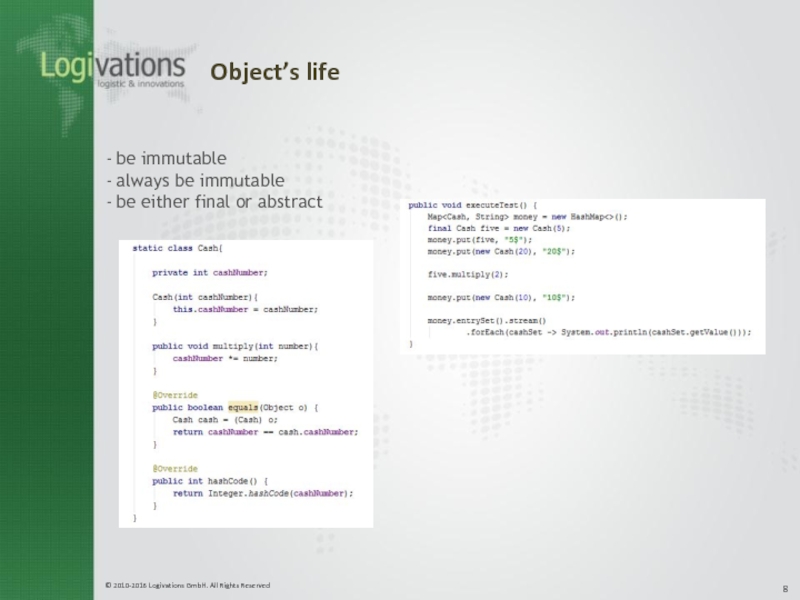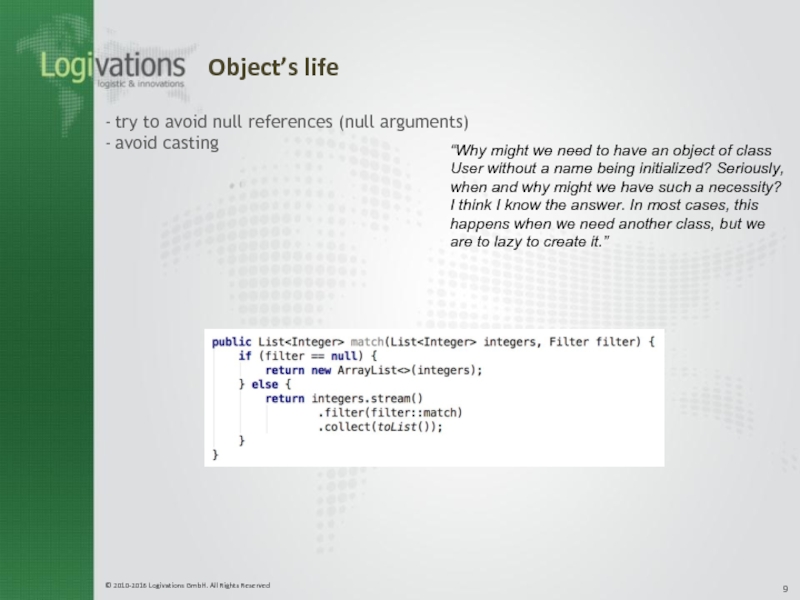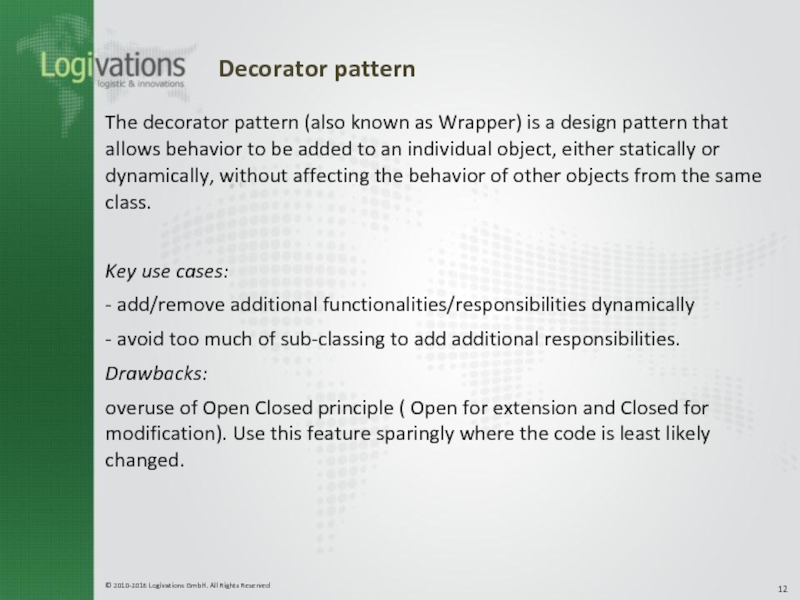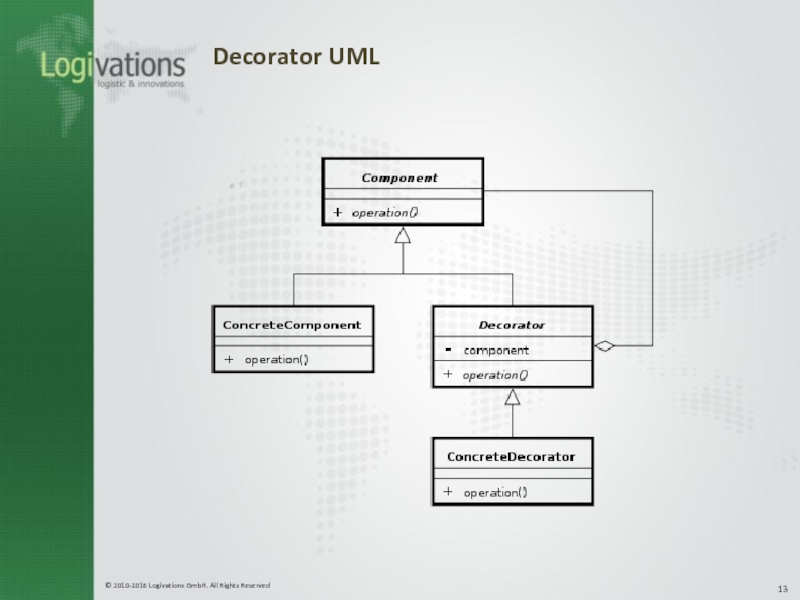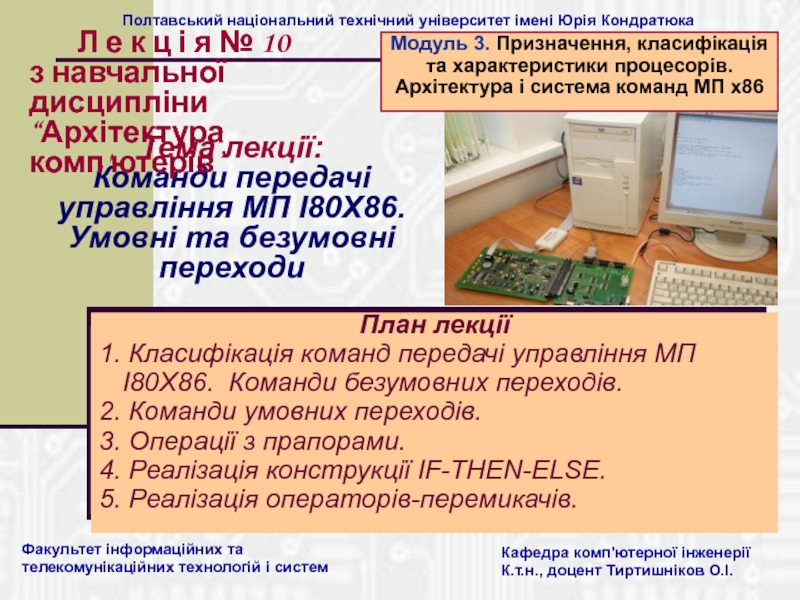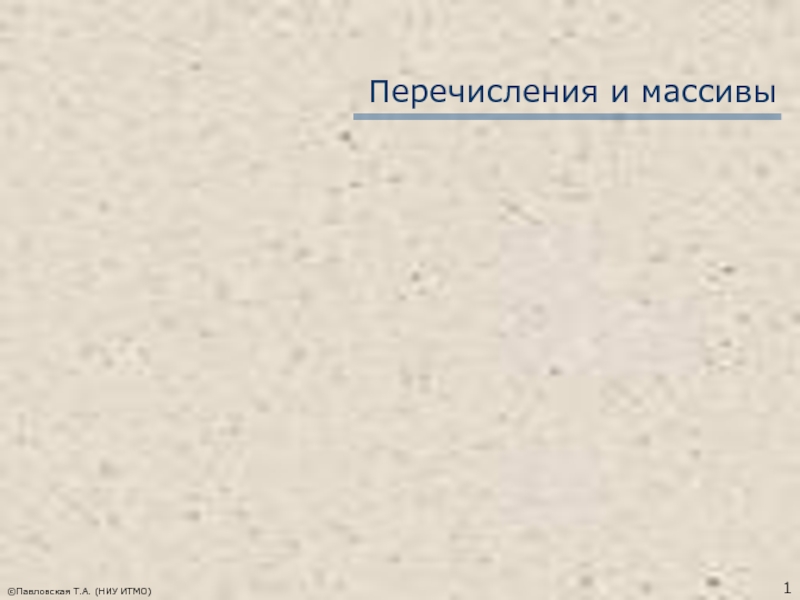- Главная
- Разное
- Дизайн
- Бизнес и предпринимательство
- Аналитика
- Образование
- Развлечения
- Красота и здоровье
- Финансы
- Государство
- Путешествия
- Спорт
- Недвижимость
- Армия
- Графика
- Культурология
- Еда и кулинария
- Лингвистика
- Английский язык
- Астрономия
- Алгебра
- Биология
- География
- Детские презентации
- Информатика
- История
- Литература
- Маркетинг
- Математика
- Медицина
- Менеджмент
- Музыка
- МХК
- Немецкий язык
- ОБЖ
- Обществознание
- Окружающий мир
- Педагогика
- Русский язык
- Технология
- Физика
- Философия
- Химия
- Шаблоны, картинки для презентаций
- Экология
- Экономика
- Юриспруденция
Elegant objects in W2MO презентация
Содержание
- 1. Elegant objects in W2MO
- 2. Objects vs data structure Data structure -
- 3. Data structure maintenance: Object maintenance:
- 4. Choose names carefully builders are nouns, manipulators
- 5. Object’s birth Make as many constructors as
- 6. Small and simple objects encapsulate as little
- 7. Object’s life always use interfaces keep interfaces short; use smarts
- 8. Object’s life be immutable always be immutable be either final or abstract
- 9. Object’s life try to avoid null references
- 10. Object’s testing write tests instead of documentation don’t mock; use fakes
- 11. “The reality, in general, is much less
- 12. Decorator pattern The decorator pattern (also known
- 13. Decorator UML
- 14. Decorator example
Слайд 2Objects vs data structure
Data structure - access data directly
Object - communicate
Data structure usage:
Object usage:
Слайд 4Choose names carefully
builders are nouns, manipulators are verb (exception: boolean method)
void
int save(long bytes){/*....*/} -> int bytesSaved(long bytes){/*....*/}
CommonGraphBuilder -> CommonGraphs
do not use prefixes like get-, set-
"Mutability, method names, and a complete absence of constructors are nothing compared to the much bigger sin this class is guilty of. It is not class, but rather data structure. And this sin can't be forgiven. Amen"
objects must be characterized by their capabilities. Name objects considering what they are and not what they do. "Suffix -er is evil ingredient"
Слайд 5Object’s birth
Make as many constructors as possible and one primary constructor:
to
to avoid code duplication;
- Keep constructors code-free
Example: CaseTypeProduct
Слайд 6Small and simple objects
encapsulate as little as possible but something at
expose fewer then five public methods (not including constructors, private methods)
don’t use static methods
don’t use public constants
"So what we get from making classes small? The answer is elegance, maintainability, cohesiveness, and testability "
Bad example
“We shouldn’t have to know about such things as static keywords in Java, but alas, we have them. I don’t know who exactly authored them in OOP, but they are pure evil. The static methods, not the authors. I hope.”
Слайд 9Object’s life
try to avoid null references (null arguments)
avoid casting
“Why might we
Слайд 11“The reality, in general, is much less elegant than practices described
However, we can change it - the reality, not the book ;)
Слайд 12Decorator pattern
The decorator pattern (also known as Wrapper) is a design
Key use cases:
- add/remove additional functionalities/responsibilities dynamically
- avoid too much of sub-classing to add additional responsibilities.
Drawbacks:
overuse of Open Closed principle ( Open for extension and Closed for modification). Use this feature sparingly where the code is least likely changed.
